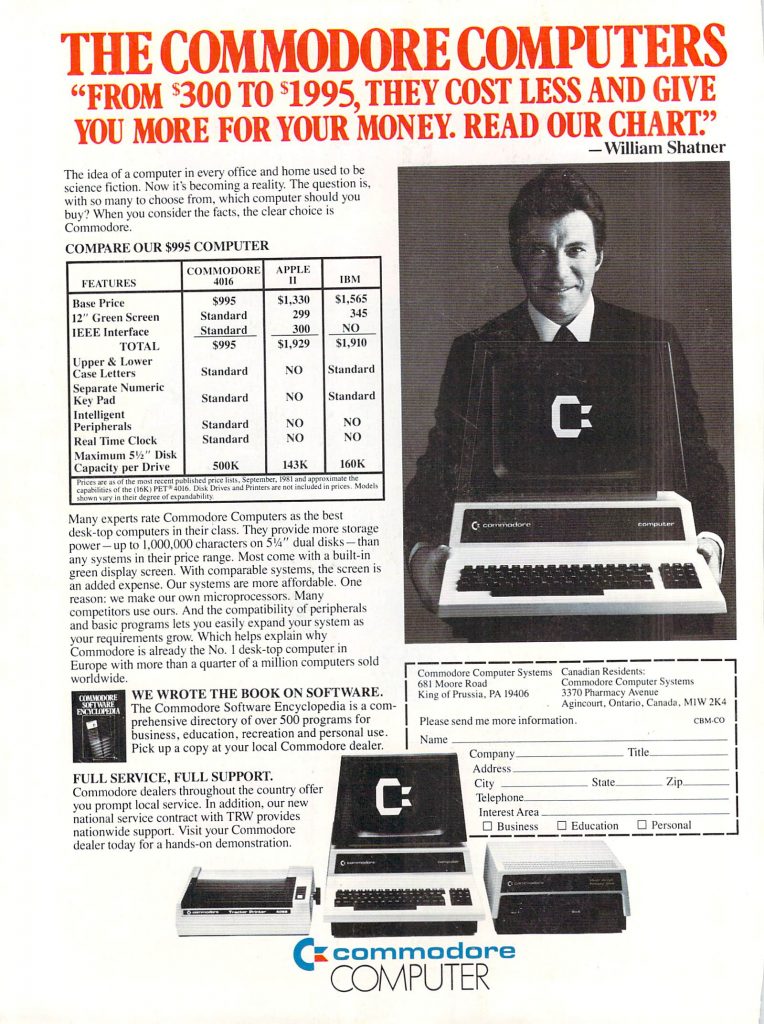Source: Compute! – Issue Number 57 – February 1985
Compute! was a great magazine for those with home computer in the 1980s, at least if you had one that it covered. In 1985 that meant the Commodore 64, VIC-20, Atari 8-bit, Apple II, and IBM PC. Many computer magazines were more technically oriented this one but if you were just looking for more typical articles and reviews then it was very solid. It still had type-in programs which was a great way to get software for almost free (minus the cost of the magazine and your time of course). The February 1985 issue includes:
Features
- The New Atari: Q & A With Sigmund Hartmann – An interview with Sigmund Hartmann, President of Atari Software, about Atari’s future. On the immediate horizon were new machines including two new Atari 8-bit computers (the Atari 65XE and Atari 130XE) as well as their new 16-bit Atari ST.
- Fame Games – A look at games using the names of famous authors and stars. Some of these include Amazon (Michael Crichton), Fahrenheit 451, Rendezvous With Rama, Ghostbusters, and many others.
- Michael Crichton: Reflections Of A New Designer – Michael Crichton discusses the creation of his adventure game Amazon.
- Birth Of A Computer Game – Game designers Chris Crawford, Jon Freeman, Bill Budge, Bruce Carver, and Dan Bunten discuss their creation process.
Reviews
- Dinosaurs – An educational game for preschoolers featuring dinosaurs for the Apple II and Commodore 64.
- The Syn Series For Atari – A look at SynCalc, SynTrend, and SynFile+ for the Atari 8-bit. SynCalc is a spreadsheet program, SynTrend is a statistics and graphing program, and SynFile+ is a database program.
- PC-Write Word Processors For PC & PCjr – A low cost shareware word processor capable of running in only 64K on the PC/PCjr.
Columns And Departments
- The Editor’s Notes – Reflections on the attributes of the perfect computer.
- Readers’ Feedback – Readers write in about DOS, the need for two disk drives, memory on the Atari 800XL, transferring/translating BASIC programs between Sinclair computers, POKE and PEEK (or the lack thereof) in TI BASIC, and more.
- The Beginner’s Page – Conditional logic and IF-THEN statements.
- Programming The TI: Programming Without A Math Background – Knowing a little math is, of course, useful when programming but an advanced degree in mathematics should hardly be a pre-requisite.
- Machine Language: Multiplication, Part 2 – The second part in a series on multiplying numbers in machine language.
- Computers And Society – Word processors and their effect on writing.
- IBM Personal Computing: Inside King’s Quest – A look at how King’s Quest was made. Incidentally, this game was created as a result of IBM asking Sierra to develop a game that would show off the color graphics of the PCjr.
- INSIGHT: Atari – A BASIC benchmark for the Atari.
- Telecomputing Today – Using a “lap computer” with a modem while traveling for business and pleasure, the latest updates on information services including CompuServe, Dow Jones News/Retrieval, and The Source, as well as a look at two new services, People/Link and Play/Net.
The Journal
- Acrobat – A type-in game for the Atari, Commodore 64 and VIC-20 in which you must use various acrobatic moves to make your way through various environments and obstacles.
- Plus/Term For VIC & 64 – A type-in terminal program for the Commodore 64 and VIC-20 with 1200bps support.
- Adding Sound Effects To Atari – Five short type-in programs for generating various sounds on the Atari.
- How TurboTape Works – TurboTape is a program that speeds up loading programs from tape that was published in the previous issue. This article explains how it works.
- IBM Rebound: All Machine Language Game For PC & PCjr – A type-in game for the IBM PC and PCjr that is similar to breakout.
- Apple Bowling Champ – A type-in bowling game for the Apple II for up to four players.
- Advanced Sound Effects On The 64 – Includes a type-in program for experimenting with different sounds without programming.
- News & Products – New printers including the Riteman LQ and Riteman Plus; Work Force II home applications package for the Apple II; new games for Atari and Commodore including Market Forces, Break Street, and more; memory expansion for the Atari 600XL; and more.

…and more!







